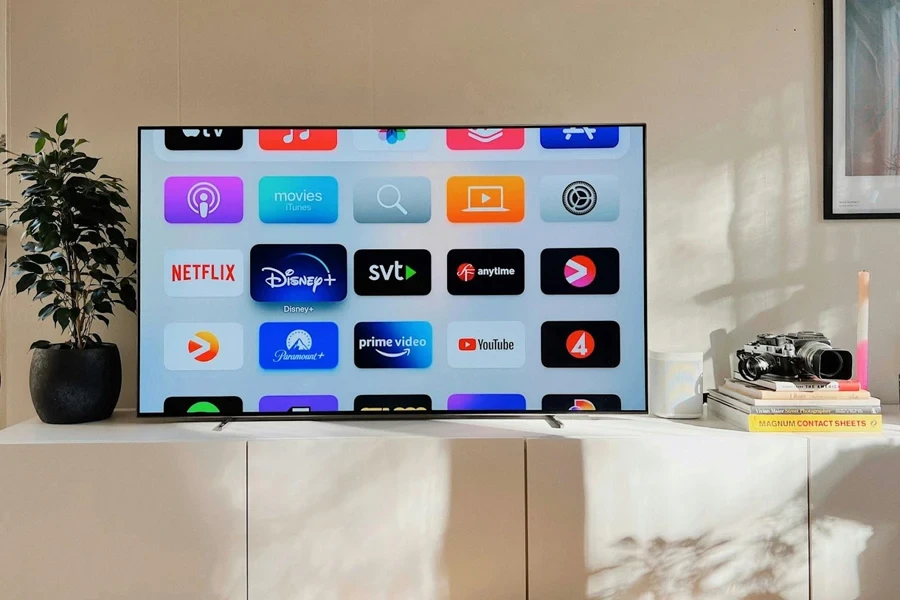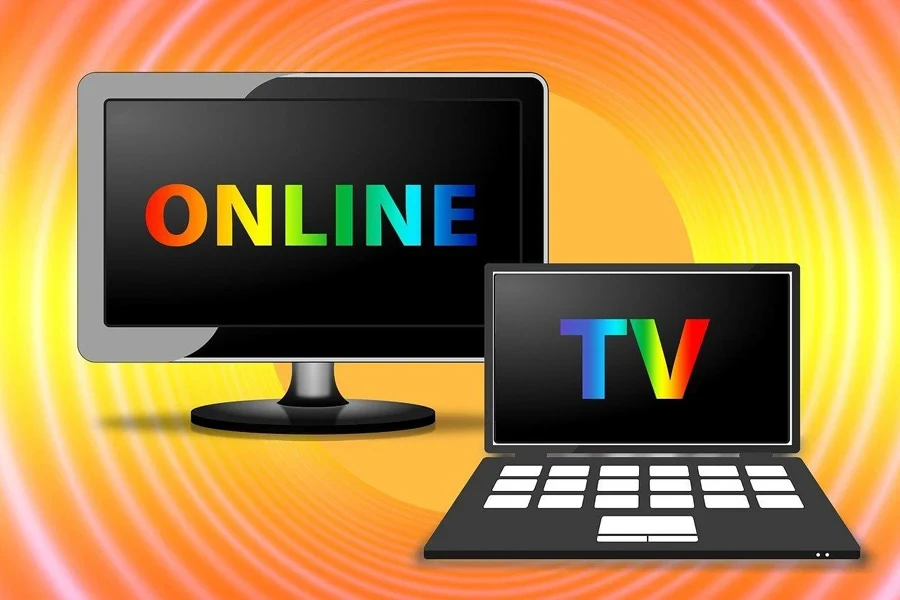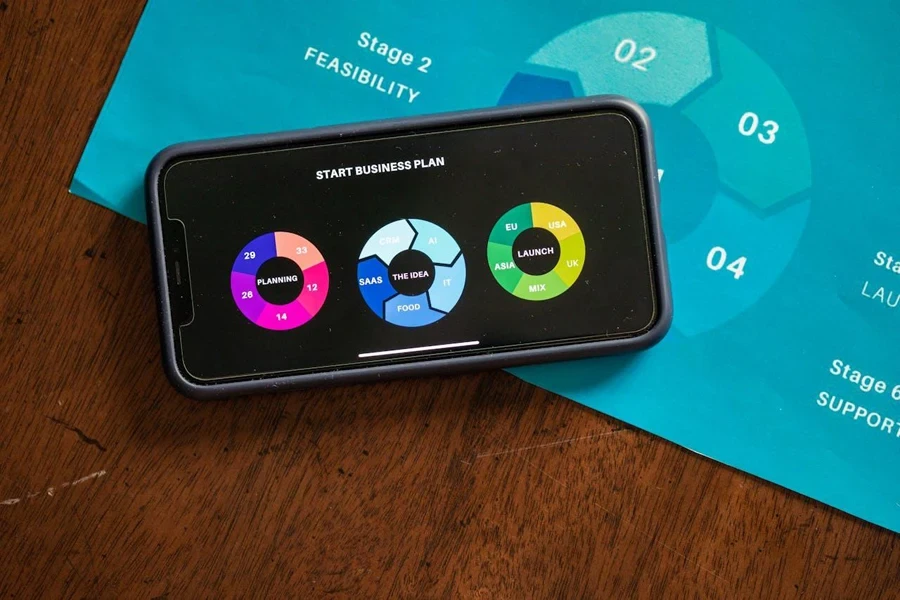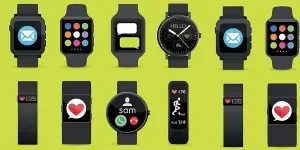To many homemakers, year-end is normally a time for another round of the “out with the old, in with the new” routine of clearing and upgrading household items. To sellers, this also signifies a season of opportunity, particularly for any new advanced technology items that promise better improvements and enhanced convenience in life. For example, any device or accessory that enhances viewing quality on TV, so that the whole family can enjoy those special moments together during the festive season.
Meet the ATSC 3.0 tuner, the game-changing device that can significantly alter the dynamics of the home TV viewing experience. Read on to find out what an ATSC 3.0 tuner is, and explore its market potential, as well as the key types sellers can offer and how to choose them.
Table of Contents
Overview of ATSC 3.0 tuners and market coverage
What is an ATSC 3.0 tune
ATSC 3.0 market coverage
Seller opportunities in the ATSC 3.0 tuner market
ATSC 3.0 tuners: Different form factors
ATSC 3.0 tuners: With advanced features
ATSC 3.0 tuners: Integrated and expandable options
How to choose the right ATSC 3.0 tuner
Target audience & markets
Compatibility with TVs & devices
Software updates capabilities
Tuning ahead
Overview of ATSC 3.0 tuners and market coverage

What is an ATSC 3.0 tuner
To get a full picture of what ATSC 3.0 tuner is, let’s first learn about what ATSC stands for. In full, it refers to the Advanced Television Systems Committee, Inc., which is a worldwide NPO (non-profit organization) that has been developing the ATSC 1.0 standard since 1996. Its primary role is to develop digital television standards that enable high-definition (HD) and surround-sound broadcasts.
Unlike ATSC 1.0, which supports HD broadcasts with a maximum resolution of 1080 (1920×1080) and a 16:9 aspect ratio, ATSC 3.0 that’s launched in 2020 offers much higher quality across all video, audio, and interactivity aspects. The video quality basically jumps from its predecessor’s Full HD to 4K Ultra HD resolution with HDR and immersive audio formats supported, for example, Dolby Atmos and MPEG-H Audio.
However, all these improvements in viewing and listening quality are not the main definitive feature that justifies ATSC 3.0 being labeled as “NextGen” TV, which signifies the next-generation broadcasting standard. It is the integration and deployment of Internet Protocol (IP) in this new standard that defines its revolutionary nature. The IP-enabled infrastructure, powered by internet connectivity, allows traditional TV broadcasts to integrate with internet-based features, such as video on demand, targeted ads, and more personalized content.
The improved signal transmission with the adoption of the new orthogonal frequency-division multiplexing (OFDM) modulation standard to convert digital data into appropriate radio frequency signals for transmission is another highlight of ATSC 3.0. Compared to the old 8VSB modulation in ATSC 1.0, OFDM uses multiple carrier waves transmitted simultaneously in smaller data chunks, sending them over several orthogonal (non-overlapping) subcarriers. This ensures they do not interfere with each other, making the system more resistant to multipath distortions and suitable for mobile and portable devices.
The enhanced reception with broader applicability in both fixed and mobile devices is getting a further user adoption boost with the backward compatibility of ATSC 3.0 tuners since they typically incorporate dual tuners to handle both ATSC 1.0 and 3.0 standards. An ATSC 3.0 tuner, therefore, can receive and play both over-the-air ATSC 1.0 and ATSC 3.0 broadcast signals, converting them into a form that can be viewed with enhanced audio formats on any TV screen. It basically turns the otherwise standard TV set into a much smarter, more versatile, and more interactive device that provides not only superior viewing and customization quality but also interactivity and more personalization.
ATSC 3.0 market coverage

Similar to many other related media display technologies, there are certain prerequisites to be fulfilled before a display technology can fully showcase its capabilities. For ATSC 3.0 tuners, one of the most obvious aspects of such prerequisites is the readiness of the broadcast and content sources that are able to transmit the ATSC 3.0 signals.
The good news is that by late 2024, from North America to South America and even in Asia, more than 80% of broadcasters in countries like the United States, South Korea, and Jamaica are already ATSC 3.0-ready. Other countries, such as Brazil, Canada, India, and Mexico, are expected to catch up in the ATSC 3.0 adoption wave as well.
Seller opportunities in the ATSC 3.0 tuner market

ATSC 3.0 tuners: Different form factors
The market of external ATSC 3.0 tuners offers many diverse form factors, which serve as a lucrative opportunity for sellers since each of these form factors represents different benefits and target audiences. One of the most common and cost-effective options is ATSC 3.0 tuners, which come in USB dongle format. These ATSC 3.0 USB tuners are lightweight and easy to carry around in view of their compact and portable sizes. They are often plug-and-play and can be connected easily without a complex installation process. Essentially, these ATSC 3.0 USB sticks offer simplicity and user-friendly flexibilities that are suitable for both portable and stationary setups, which sellers can capitalize on to target both mobile and fixed installation markets.
Besides the relatively simple and hassle-free version of ATSC 3.0 USB TV tuners, standalone ATSC 3.0 TV boxes or ATSC 3.0 set-top boxes constitute the much more complex, advanced selling opportunity for avid or more tech-savvy ATSC 3.0 tuner fans. These tuners that come in set-top boxes are often also interchangeably called ATSC 3.0 converters.
However, it’s worth noting that the term “converter” can be misleading because, unlike older analog-to-digital converter boxes from the ATSC 1.0 era, ATSC 3.0 converters do not output an analog signal. Instead, they also output a digital signal (usually via HDMI) that is suitable for modern TVs. Hence essentially, an ATSC 3.0 converter box is just the same as a tuner, except that it’s an external tuner that enables ATSC 3.0 reception on a TV that doesn’t have it integrated.
Completely overturning the traditional impression of the utility of TV tuners, another form factor of the ATSC 3.0 tuner is simply fascinating since despite being a TV tuner, it literally functions well without TVs. The role of TV, instead, is replaced by the computer’s motherboard via PCIe slots, which allows users to watch and record over-the-air ATSC 3.0 television directly on their PCs once installing the ATSC 3.0 PCIe Tuner Cards. With ATSC 3.0 tuners available in PCIe card form factors, computers can then receive and decode NextGen TV broadcasts, eliminating the need for TVs, and reflecting a great opportunity for sellers to tap into the PC-based market.
ATSC 3.0 tuners: With advanced features

In a world where convergence seems to be becoming not only a norm but an essential trend, it surely helps to entice more consumers by offering ATSC 3.0 tuners with other additional features. An ATSC 3.0 tuner with digital video recorder (DVR) functionality, for example, allows users to record their favorite over OTA (over-the-air) content, adding significant practical value to users who seek flexibility and control over their viewing content.
Meanwhile, there are also other advanced ATSC 3.0 tuners that come with additional connectivity services, including features such as Bluetooth, Ethernet, and Wi-Fi. ATSC 3.0 tuners with Wi-Fi connectivities are instrumental in enabling various online features, from video on demand (VOD), streaming services, and firmware updates to interactive TV applications as well as multi-room streaming for network-based devices.
ATSC 3.0 tuners with Bluetooth integration, on the other hand, are essential for peripheral and mobile device integrations. These tuners make pairing and management of Bluetooth-enabled devices such as headphones, speakers, or any smartphones or tablets much simpler. They also support integration with smart home systems for voice control and automation.
All these ATSC 3.0 tuners with extra recording and advanced connectivities can enhance user experience, and help improve competitiveness among existing ATSC tuner offerings as they also serve as something that’s more future-proofing and versatile. Sellers can tap on these innovative features to further differentiate and market their products.
ATSC 3.0 tuners: Integrated and expandable options

Aside from different form factors and being equipped with various extra features, sellers can definitely look into spicing up the deals by offering bundled solutions such as TVs with built-in ATSC 3.0 tuner models or simply TV sets with ATSC 3.0 tuners included separately. All these integrated and expandable options are most helpful for existing TV sellers as well as TV hardware-related sellers catering to a more diverse, extensive, and versatile customer base.
Most major TV brands express enthusiasm and optimism in response to the adoption of the ATSC 3.0 standard by actively launching different latest TV sets with built-in ATSC 3.0 tuners. For instance, the Sony Bravia XR A80K OLED TV series and LG QNED80A smart TV models are said to be among the pioneers in integrating ATSC 3.0 technology since as early as 2022 and are still expanding up to now. Sony Bravia series apparently are the models that actively promote ATSC 3.0 standards, as its other flagship model: Sony Sony Bravia XR A95L OLED TVs in 2023, continues to feature advanced capabilities with built-in ATSC 3.0 tuner.
The expandable ATSC 3.0 tuner solutions, or more specifically, the bundling options represent another sellable and highly attractive offer that the sellers can promote. For example, TVs can be sold together with either ATSC 3.0 TV tuner boxes or ATSC 3.0 tuner set-top boxes to enhance the functions and quality of the otherwise standard TVs. At the same time, sellers may also bundle the ATSC 3.0 USB dongles or PCIe ATSC 3.0 tuner cards with computers or other compatible Android devices to expand functionality.
Altogether, these built-in and bundled options greatly expand the possibilities of diversification and enhance the opportunities for sellers.
How to choose the right ATSC 3.0 tuner
Target audience & markets

The most important consideration for sellers when choosing the right ATSC 3.0 tuners to be stocked up with is aligning with the needs of their target audience and markets. The target market is important as sellers should focus on ATSC 3.0 broadcast coverage regions and countries for maximum market relevance and demands. Naturally, being one of the latest next-generation broadcast standards in the world, ATSC 3.0 tuners are more appealing to tech-savvy consumers as well as premium buyers who are going after enhanced home entertainment experiences. That’s why ATSC 3.0 tuners with more advanced features and multiple connectivity options can almost certainly appeal to these groups of target consumers.
Depending on target viewers and the market too, sellers may consider choosing from a range of form factors for different customer preferences and installation environments. Portable and compact options such as USB dongles and internally integrated card-based options, such as PCIe cards, for example, serve to address a niche market compared to the more commonly available, standalone set-top tuners.
Compatibility with TVs & devices

Similar to all other types of consumer electronics devices, the implementation of ATSC 3.0 tuners involves certain compatibility considerations. When integrating on TVs, the main factors depend on the TV’s input ports and software support. For instance, ATSC 3.0 tuners typically can be easily connected on modern, smart TVs via HDMI inputs, whereas for older TV models with RCA composite ports, additional adapters may be needed in order to support RCA connections.
In the meantime, sellers who are aiming to provide ATSC 3.0 USB stick tuners should also take note of their compatibility with computers and Android devices that come with USB ports. It’s important to note that even though most modern TVs nowadays come with USB ports, they may not support ATSC 3.0 USB tuners due to a lack of necessary drivers.
Software updates capabilities
Finally, when selecting suitable ATSC 3.0 tuners, sellers must also look into long-term compatibility and adaptability, primarily demonstrated through software updates, potential enhancements, and future expansions.
In terms of software and driver availability, sellers should ensure that necessary drivers and software are available and can be regularly updated to stay competitive. Overall, ensuring compatibility and updated performance, aligned with evolving broadcasting standards as well as for new feature introductions are essential in making sure the tuners are adaptable to future technologies and broadcasting improvements.
Tuning ahead

ATSC 3.0 is the newest broadcast standard developed by the ATSC NPO, which replaces the previous ATSC 1.0 standard to usher in the NextGen TV era. This newest standard brings many improvements in terms of signal transmission to IP-based features, improved reception, and interactivity. Most ATSC 3.0 tuners come with hybrid or dual-tuner configurations, capable of supporting both ATSC 1.0 and 3.0 broadcast standards. They can hence help ensure that broadcasts can be received on any TV with enhanced audio and video quality, along with all other interactive features of ATSC 3.0 standards. More than 80% of the United States and South Korea are already covered with ATSC 3.0 deployments.
Sellers can offer ATSC 3.0 tuners that come in different form factors, featuring advanced features, and built-in ATSC 3.0 tuners or options to bundle them with TVs, computers, or devices accordingly. When considering arrays of ATSC 3.0 tuners to be offered, sellers can reflect on the target audience & markets, the chosen tuners’ compatibility with TVs and devices, as well as their software update capabilities.
Seize the opportunity, tuning ahead by offering ATSC 3.0 tuners, and explore other TV-related sourcing insights here at Alibaba.com Reads. Regular visits ensure access to new strategies and growth ideas on logistics efficiency and optimize wholesale business operations.




